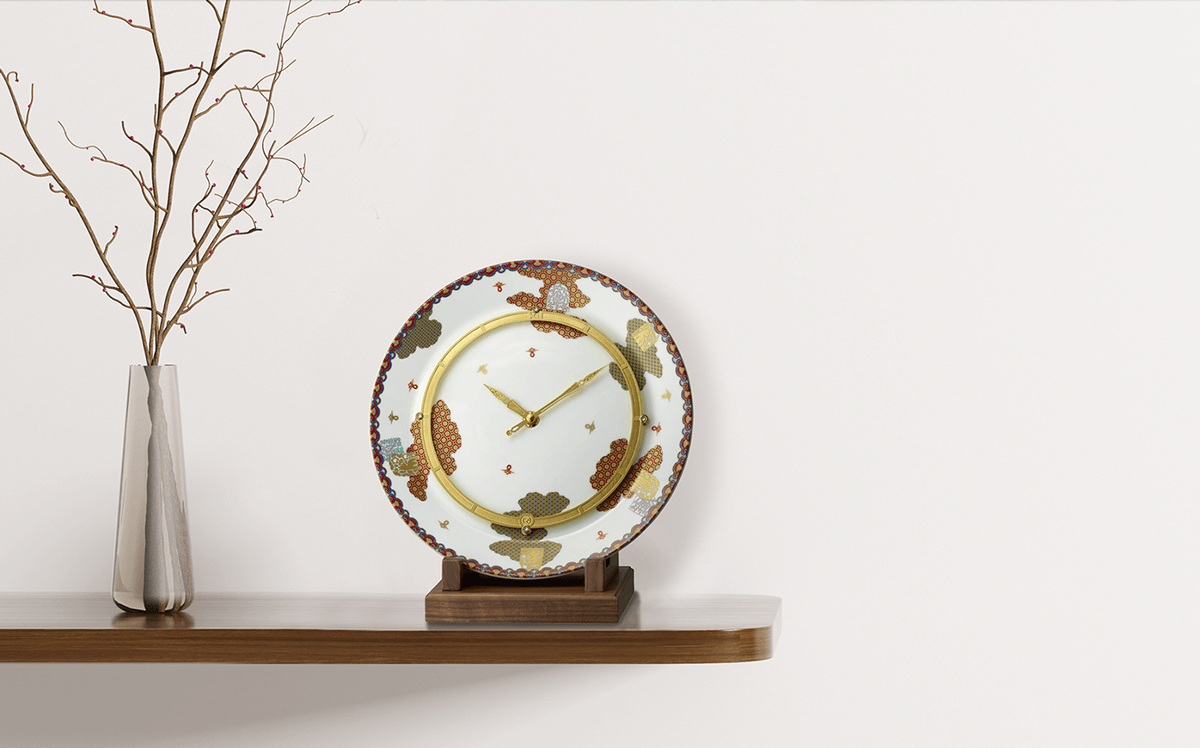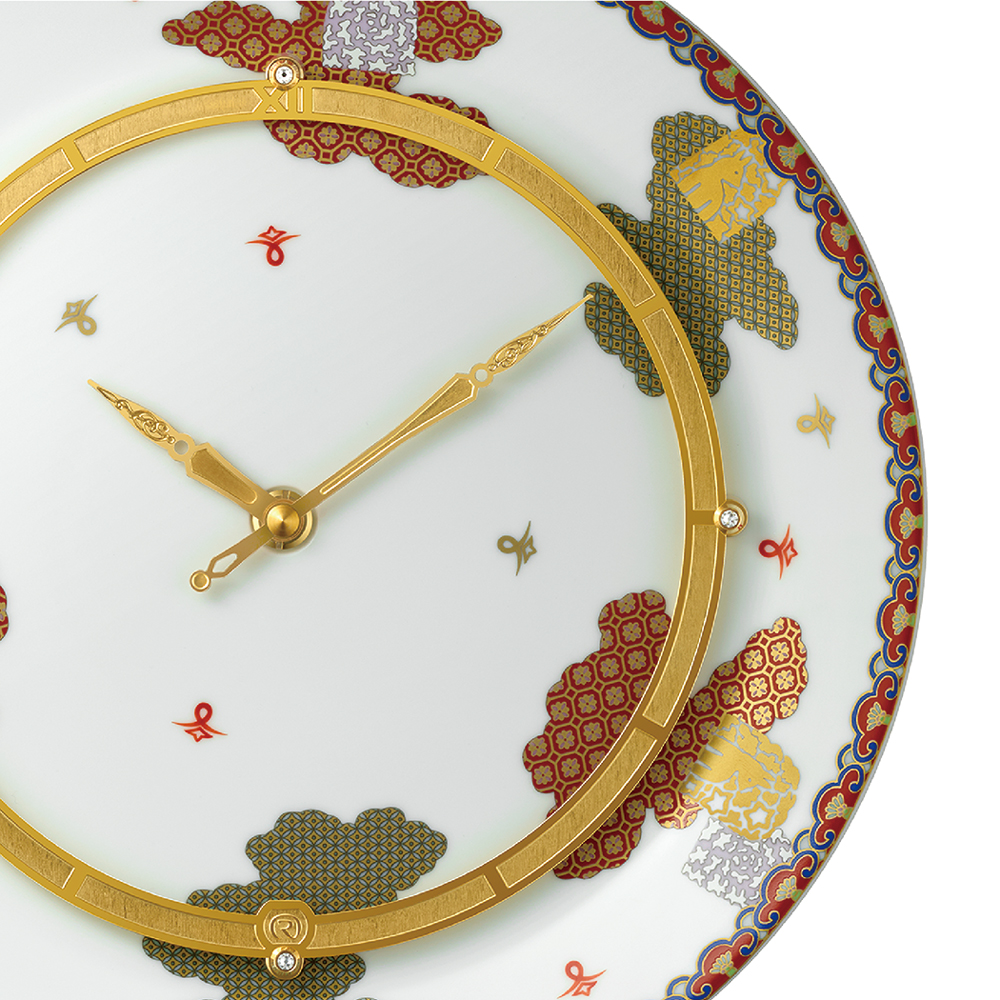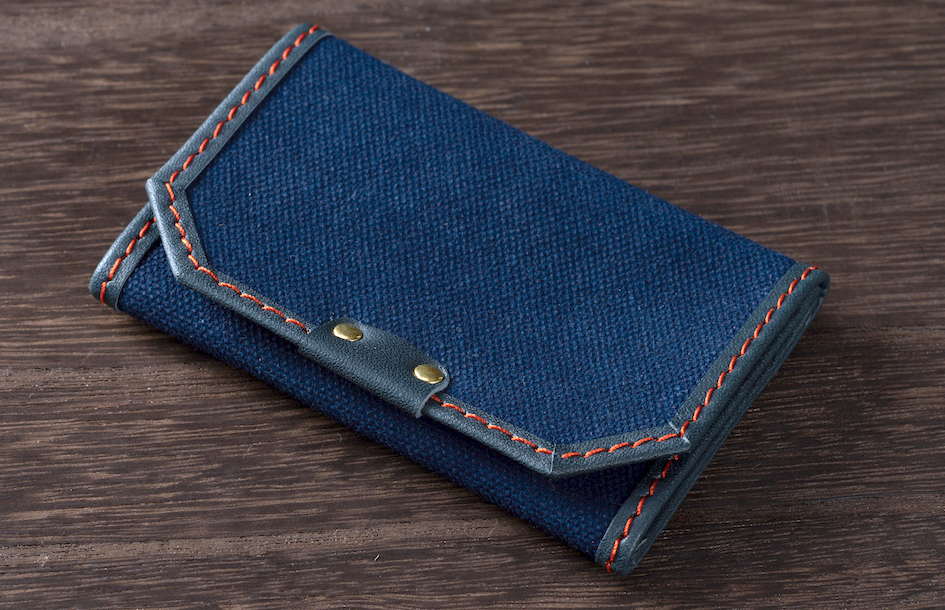Rhythm Watch Industry Co., Ltd. will release the Koransha Arita ware watch “Kunranashi 799 / Ruri Fujie 799” from early May, which uses the traditional pattern of Koransha as the 70th anniversary model of the company. A gem recommended as a gift for loved ones.
Product features
For the design of the product, we have selected a design that has a particularly strong feeling in the long history of Arita ware’s prestigious Koransha.

Koransha's picture

Cloud scattering pattern (4SG799HG03)
It is the design of the time when it won the Grand Prix at the 1876 Philadelphia Expo.
It is an elegant pattern that imagines the combination of flowing clouds and birds.
A clock that keeps engraving the “now” that is flowing.
Aside from daily life, a design for “time” that celebrates everyday life.

Ruri Fuji design (4SG799HG04)
This is a work of Fuji-e which has been popular since ancient times in commemoration of the 2013 World Heritage Site.
The white snow on the top of Mt. Fuji has an impressive design that appears in gold.
A beautiful amber clock unique to Koransha surrounded by cherry blossoms full of Japanese atmosphere.
"Koransha" which made ARITA of Japan recognized as an art in the world

Approximately 330 years ago, when the Genroku culture of Edo flourished, Koransha’s predecessor was the first generation of Eiemon Fukagawa, who started manufacturing porcelain in Arita.
Then, during the turbulent period of the Meiji Restoration, Arita ware lost all protection and support of the Saga Nabeshima clan, and it was the eighth generation Fukagawa Ezaemon who played a leading role in its reconstruction. We created a society by bringing together selected potters, painters, and potters at the time. This is Koransha.
Entering the Meiji era, the elegant pattern with elegant dyeing and brilliant red paintings on white, hard and transparent cloth, won numerous honorary gold tiles at world expositions around the world, and in 1891. It has been honored by the purveyor of the Ministry of the Imperial Household and continues to this day. The traditional beauty that has evolved with the era of Arita colored porcelain is also known as “Koransha style” or “Koransha style” and is widely loved both in Japan and overseas.
Arita's famous kiln "Ikeda Ceramics"

The highly accurate work of assembling a clock with ceramics is realized by the excellent craftsmanship of Arita and Ikeda kilns.
Ikeda Seito, who was in charge of the exterior production, is a prestigious pottery that has separated from the 200-year-old tradition of the Dendai kiln in Arita and has taken its own path under the name of Rokuemon. The elaborate and graceful modeling and the refined and gorgeous painting are the unique techniques of Ikeda kiln.
On the other hand, rather than relying on traditional techniques to live comfortably in tradition, we are constantly striving to invent new Arita styles by using originality and ingenuity. This is the true value of the Ikeda kiln.
>Koransha Arita ware watch special site










































